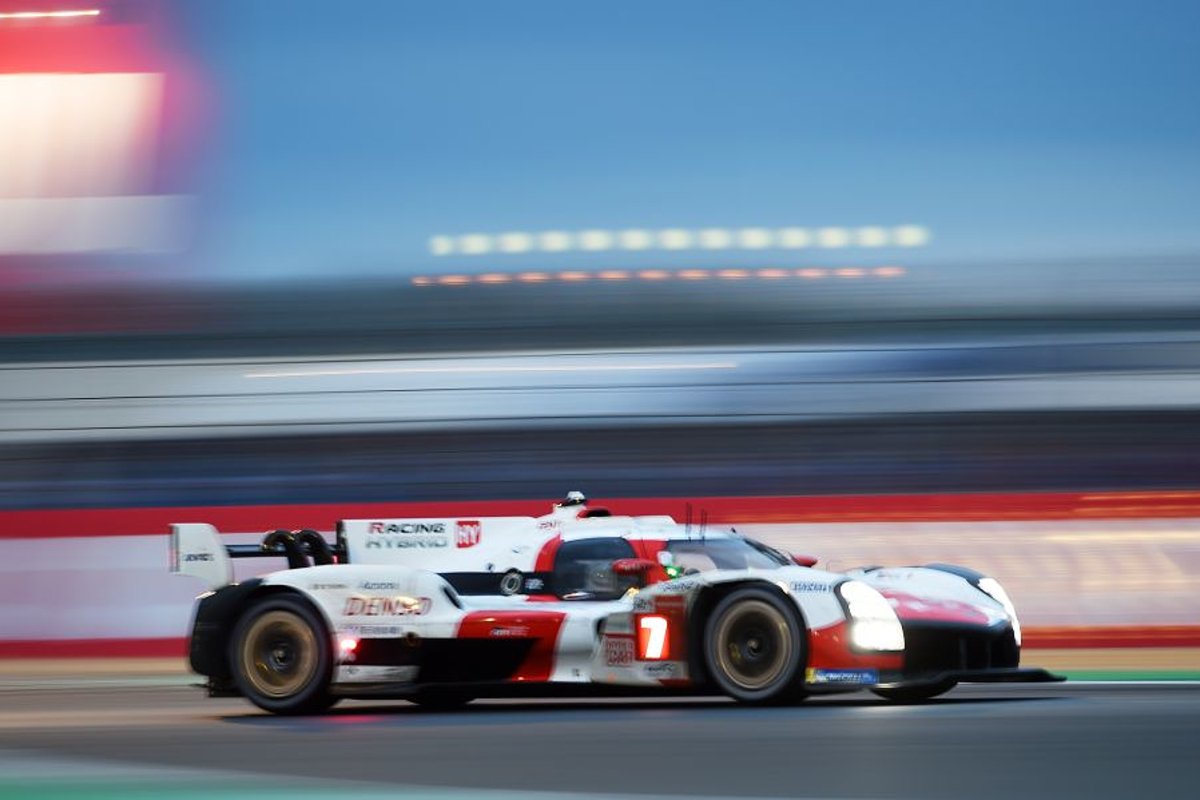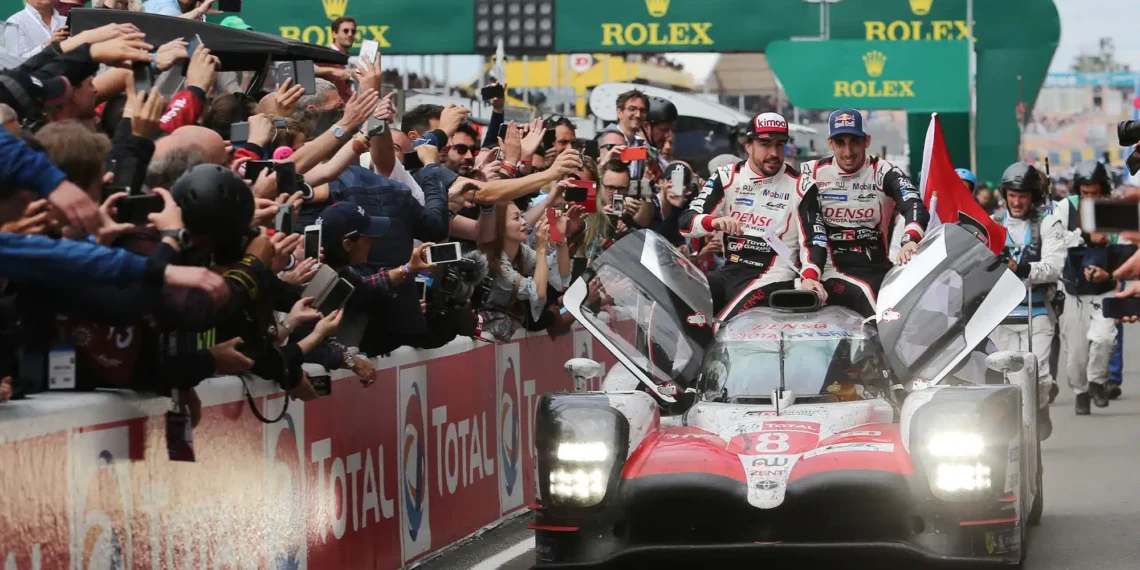Breakdown of Key Developments
Toyota showed real control at the 2018 24 Hours of Le Mans. Their resilience and focus stood out in one of the toughest endurance races around.
After 18 hours, they avoided the technical gremlins that usually haunted their Le Mans efforts. At that point, they were closing in on the 300-lap mark—pretty wild when you think about it.
Duel for the Lead
The main battle was between Toyota’s #7 and #8 TS050 Hybrid cars. Mike Conway really pushed the #7 with a long, gritty stint through the night, putting it out front for a while.
The #8 car, though, hit a rough patch. Sébastien Buemi got slapped with a 60-second stop-go penalty for pushing the speed limit in a slow zone—never ideal.
Fernando Alonso took over for the #8 and chipped away at the gap, lap after lap. He sounded confident on the radio, telling the team he was ready to keep pushing even as fatigue set in.
When the sun finally crept up over Circuit de la Sarthe, Kazuki Nakajima made a move at Mulsanne corner and grabbed the lead for the #8 car. Both Toyotas picked up more speeding penalties later, but the Rebellion Racing cars were too far back to capitalize; they’d spent the night fighting their own mechanical woes.
LMP1 and LMP2 Highlights
In LMP1, things got messy behind Toyota. The #17 SMP Racing car crashed at the Porsche Curves—never a good spot for drama.
The #11 SMP team wasn’t any luckier, losing hours to sensor failures that basically turned their race into a glorified test session. Rebellion Racing kept circulating, but they just didn’t have the pace or luck to threaten Toyota’s lead.
LMP2 was a different story. The #26 G-Drive Racing Oreca Gibson stayed out front, with Jean-Eric Vergne, Andrea Pizzitola, and Roman Rusinov running a tight ship all night.
The #23 Panis-Barthez Liger team also made moves, getting ahead of the #36 Signatech Alpine car as the hours ticked by.

GTE-Pro and GTE-Am Categories
The GTE-Pro fight had its moments, too. The #92 Porsche 911 RSR—the famous ‘Pink Pig’—took the lead after passing the #91 car.
Dirk Muller in the #68 Ford Chip Ganassi Team USA car tried to close the gap, but by morning, he just couldn’t reel them in.
Over in GTE-Am, the #77 Dempsey-Proton Porsche kept its nose out front. The car held off the #54 Spirit of Race Ferrari, driven by Giancarlo Fisichella, and the #85 Keating Motorsports entry with Jeroen Bleekemolen at the wheel.
Weather and Track Conditions
Weather ended up being a non-issue. Even with talk of rain overnight, conditions stayed calm and dry, so drivers could just focus on racing.
Honestly, that probably helped keep the event clean as it headed for the final stretch. No weather drama—just pure racing and strategy.
Race Insights
- Performance: Kamui Kobayashi, Fernando Alonso, and Kazuki Nakajima all brought something special to Toyota’s effort. Their mix of speed and stamina really carried the team.
- Reliability: Toyota’s engineering progress meant the TS050 Hybrids dodged the mechanical headaches that tripped up SMP Racing and Rebellion Racing.
- Key Moments: Nakajima’s pass at Mulsanne and those penalties for both Toyotas—those moments shaped the race’s closing hours.
Frequently Asked Questions

What milestones has Toyota achieved in endurance racing?
Toyota’s really carved out a name for themselves in endurance racing, especially at the 24 Hours of Le Mans. Their hybrid cars have proven reliable, and those championship wins just keep adding up. If you want to dig deeper, check out their bittersweet Le Mans win where they powered through some tough moments to seal the deal Toyota’s bittersweet Le Mans win.
Who is Nakajima, and how has he contributed to Toyota’s racing victories?
Kazuki Nakajima stands out as one of Toyota Gazoo Racing’s top drivers. His skill and determination have pushed the team to some big wins, especially at Le Mans. Nakajima’s steady hand and racecraft have made a real difference, particularly during tense moments on track Nakajima’s racing impact.
What tactics has Toyota used to perform well in nighttime endurance events?
Toyota’s approach to night racing is all about preparation. They focus on strong lighting, reliable telemetry, and keeping everyone in sync. This edge often lets them stay quick and avoid mistakes when others struggle. You can see this in how they handled the night shifts at Le Mans Toyota’s endurance strategies.

How has Toyota’s engineering in race cars boosted their performance?
Toyota’s hybrids are packed with tech—energy recovery, sharp aerodynamics, you name it. These tweaks help them squeeze out more speed and efficiency, which is huge in endurance racing. Their cars just seem to soak up the pressure and keep going Toyota’s advanced race car technology.
Can Toyota’s recent racing wins influence their non-racing vehicle sales or brand image?
Honestly, it probably helps. Racing success makes Toyota look innovative and tough, which can only be good for their reputation. Big wins at places like Le Mans grab attention and might just sway buyers who want a car from a winning brand Toyota’s reputation and wins.
How are Toyota’s endurance race cars different from their everyday vehicles?
Toyota’s race cars push the limits of performance and durability. They come packed with custom-built engines and use materials you won’t find in your average sedan.
These machines often run hybrid systems that focus on endurance, energy recovery, and keeping things as light as possible. Meanwhile, the cars you see on the road aim for reliability, comfort, and just making life easier for daily drivers.
Sometimes, Toyota borrows ideas from their endurance racing cars and brings them into their regular models, which is pretty cool if you ask me. Toyota’s race car designs vs commercial.





































